
views
- Chop the ingredients into uniform pieces so they'll cook evenly.
- Heat butter, ghee, or oil in the pan before adding the ingredients.
- Stir regularly to prevent sticking. Firm veggies take 5-7 minutes to cook.
Sautéing Basics

Heat the pan over medium to medium-high heat for one minute. Because you're sautéing, you want your pan to get hot before putting anything in it. This is important for several reasons: Chop your ingredients into manageable, bite-size pieces. Cutting them up makes them easier to eat and handle, and it also helps them cook faster and more evenly. A colder pan has hot spots. Hot spots are places on the pan where it is inordinately hotter than elsewhere. This can cause uneven cooking, leaving you with some ingredients that are overcooked and others that are undercooked. As you continue to heat the pan, the heat distributes itself evenly over the entire pan, producing a better final product. Cold proteins on cold pans will dry out the proteins before they even begin to cook. Put a cold piece of chicken on a cold pan and your chicken will likely be much drier than had you started with the pan piping hot. Needless to say, dry food isn't ideal.
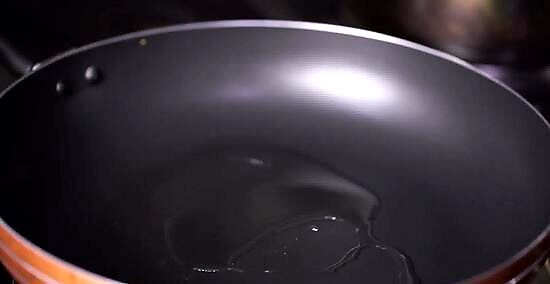
Add your butter or your oil, depending on what the recipe calls for. The amount will vary by recipe, and the type of fat you want to choose will affect the final dish being served. Here's a quick primer on whether to choose butter or oil as your fat: Butter has a smoking point of 350 °F (177 °C), while most oils have a higher smoking point (375-450 °F). This means that butter burns easier than oils. If you're worried about burning your fat while you cook, opt for oils. On the other hand, butter leaves a better "fond" (brown crust) and richer taste; if you're cooking over less heat, opt for butter. One way to solve the flashpoint dilemma of butter is to use clarified butter or ghee. Clarified butter is simply butter with the milk solids removed. Because the milk solids are what end up burning, removing them from the butter should allow you to cook it at higher temperatures. One caution using olive oil. While many chefs prefer the taste of olive oil over other oils, it actually has a lower smoking point than other oils. For this reason, it may be beneficial to cook with a neutral oil like avocado oil (smoke point 480 ºF) and then add olive oil at the very end for taste.
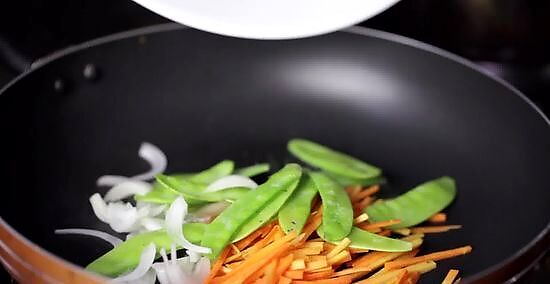
Add your food, making sure your pan is big enough to hold all of it easily. Remember: you need space to move the food around in the pan. You could use a skillet or sauté pan but a standard frying pan will do the job nicely too. Remember to start sautéing the food that takes the longest to cook first. Try to stagger the introduction of the ingredients into the pan so that the first ingredients to hit the pan are the ones that take the longest to cook.
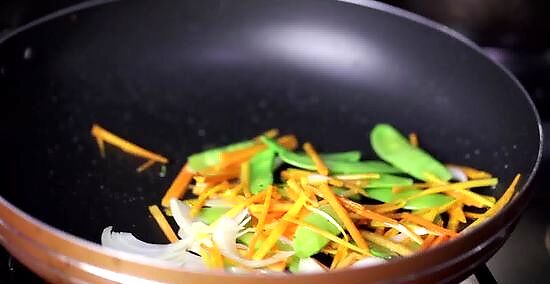
Stir regularly or shake the pan so the food doesn't stick. If the ingredients or the fat starts smoking, simply remove the pan from the burner or element for a short spell and consider turning down the temperature.

Test if the food is done. It should take around 5 to 7 minutes to sauté most firm vegetables, but you can test a piece by sampling it. While the color of the ingredients is incredibly important, the taste is the real factor in determining whether an ingredient is cooked. Most vegetables sautéd should be cooked al dente, which means just undercooked (as the ingredients will continue cooking even off the heat). Most recipes will give you cooking times for how long you should cook the ingredients. It's important to remember to only use these cooking times as rough guidelines instead of as strict edicts. Your pan, burner, the cut of the ingredients, and even your level of expertise will affect that cooking time. Try to think of cooking times as suggestions instead of as mandates. Sample your food obsessively. In case you've never stepped foot into a professional kitchen, you might be surprised to know that chefs taste everything they cook. ("Never trust a skinny chef.") They do this to make sure that the food is cooking properly. Only taste will help you determine whether something is truly done.
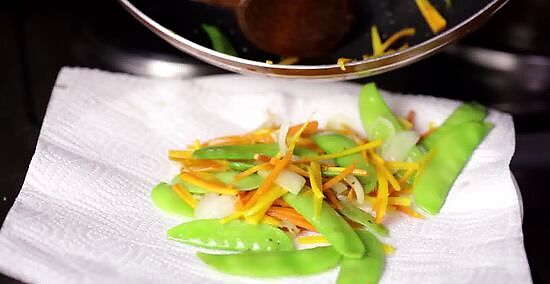
Drain the oil. Remove pan from heat and pour ingredients onto a clean kitchen towel or paper towel to remove excess oil. Alternatively, leave the food in the pan and add any ingredients that will form the sauce for the dish.
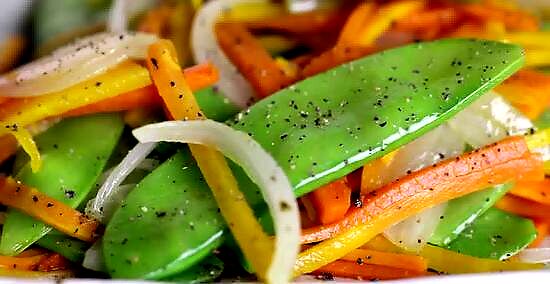
Season your food appropriately and serve.
Advanced Techniques

Know the difference between sautéing and other frying methods. As we've just learned, "sautéing" is a pretty specific term. It's distinct from other cooking techniques, such as: Pan-frying. Pan-frying doesn't involve tossing or stirring like sautéing would. (You pan-fry salmon, but you sauté collard greens.) Plus, pan-frying uses a little bit more fat at slightly lower temperatures than sautéing does. Stir-frying. Stir-frying is essentially the same as sautéing, except for two points. Stir-fry is usually cooked in a wok or wok-like pan, and in stir-fry, the sauce is made in the wok with the ingredients still in the pan, whereas in sautéing, the ingredients are taken out before the sauce is made. Sweating. Sweating is the process of cooking vegetables, such as onions, for a short while over low heat. The goal is to get the ingredients translucent and limp, not browned and crunchy.
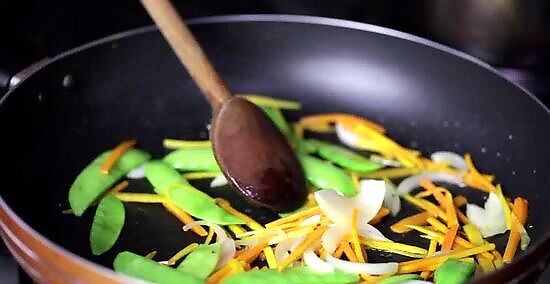
Resist the urge to press down on your meats and veggies. If your pan is hot enough and contains enough fat, you don't need to press down on meats or veggies that you're sautéing in order to get them brown. This simply robs them of moisture. Treat your ingredients a little more delicately and they'll taste better in the end. We promise!
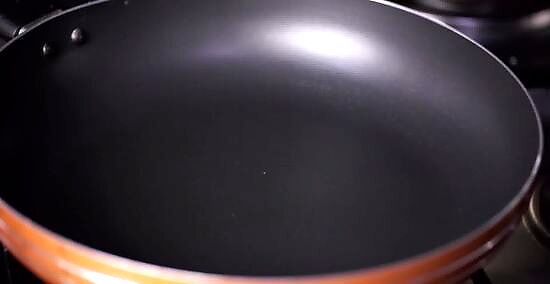
Choose a big-enough pan when sautéing. A pan that is overly crowded with ingredients while sautéing will make your cooking time longer and produce uneven results. An 8- or 10-inch pan is probably perfectly acceptable for a dish for two, but a 12-inch pan might be needed for a meal with larger portions. Don't overcrowd! Non-stick pans are good for some types of cooking, but they don't always produce the best results for sautéing in particular. That's because they don't promote as much browning as steel pans. Consider using a non-stick pan for sautéing greens like as spinach and broccoli while using a steel pan for anything else.
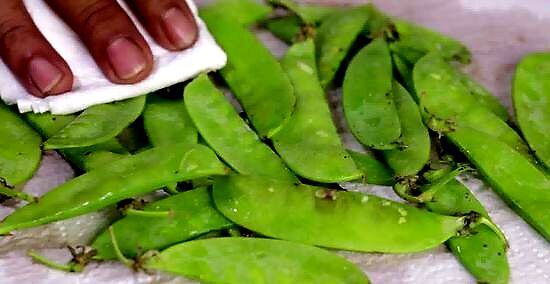
Dry your food before sautéing. Even if you've prepared a marinade, try to dry your ingredients off before sautéing. Any moisture still attached to food during the cooking process will cause them to steam instead of sauté. Pat down with a paper towel, if necessary.
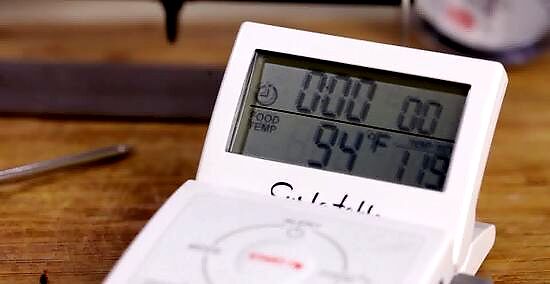
Get a good digital thermometer to read the doneness of meats. A digital thermometer will be able to tell you when your meat is finished cooking, eliminating the guesswork from the equation. It's a heck of a lot easy than the finger test for checking doneness. Red meat is fully cooked at 160 °F (71 °C). Medium is measured at 135–140 °F (57–60 °C), while rare is measured at 130 °F (54 °C). Red meat can safely be cooked at varying degrees of doneness, based on the preference of the diner. Poultry is fully cooked at 165 °F (74 °C). Poultry should always be fully cooked. Pork is fully cooked at 160 °F (71 °C). Pork should always be fully cooked. Seafood is generally fully cooked at 125–140 °F (52–60 °C). Seafood is often eaten rare, medium rare or slightly rare without incident. (Most seafood is flash-frozen to kill off any parasites immediately after being caught.)


















Comments
0 comment